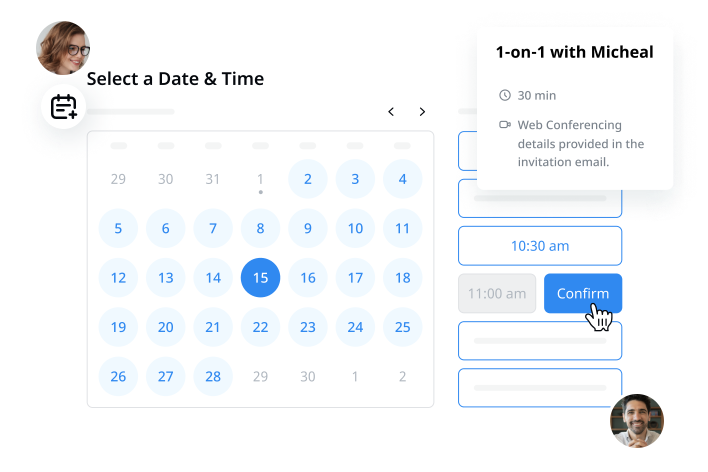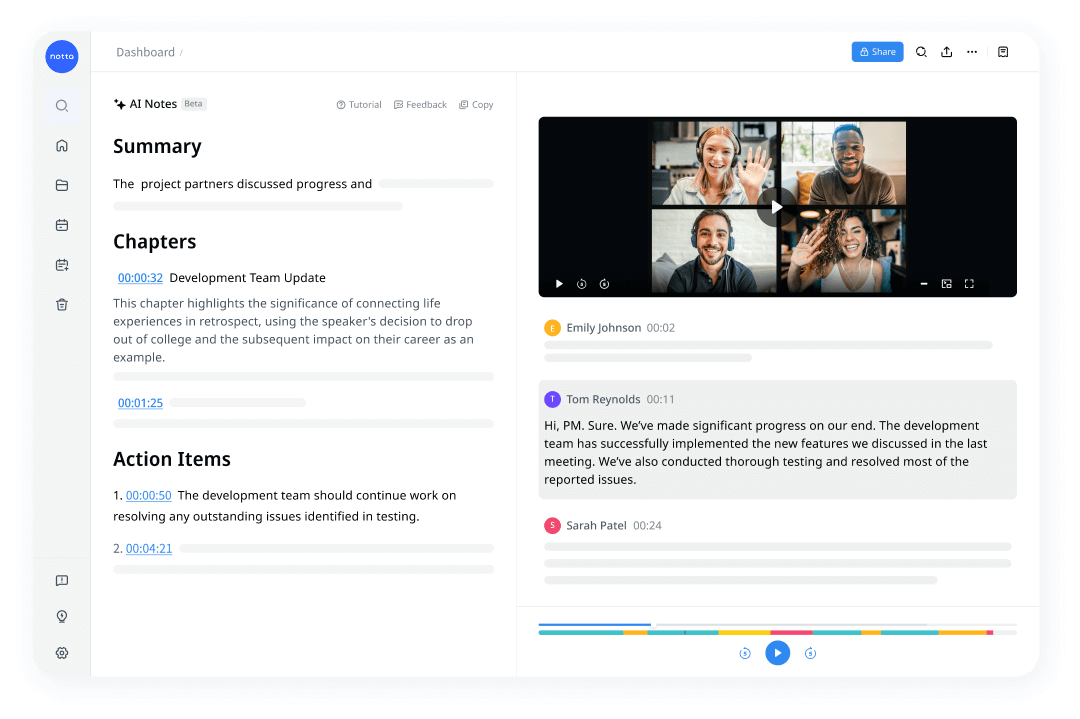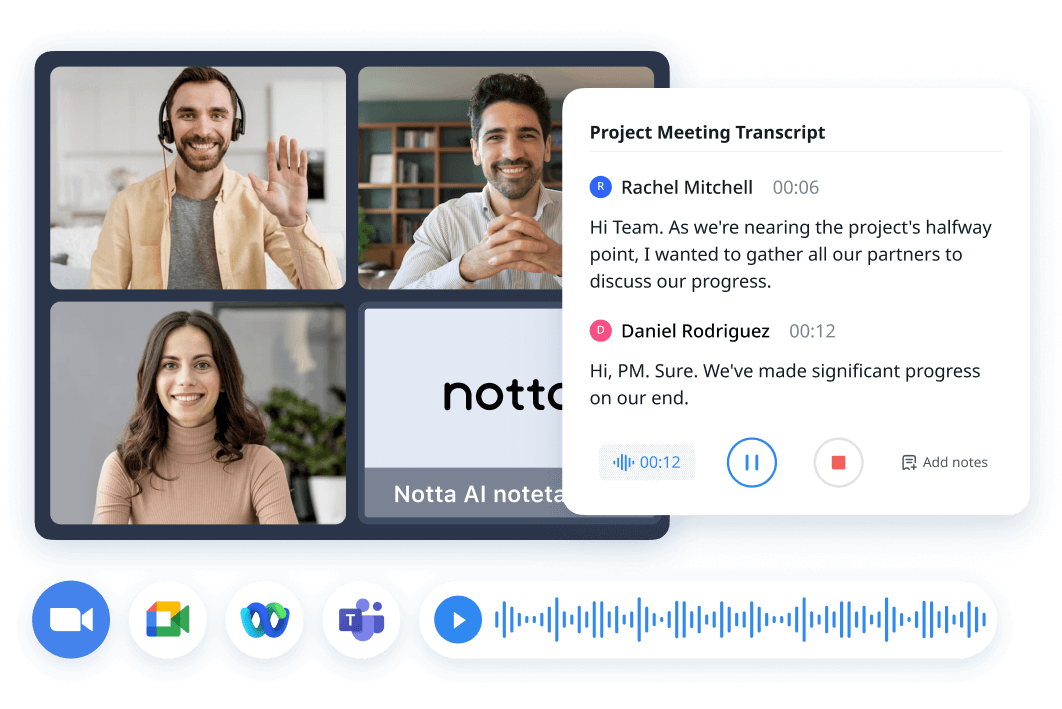Board meetings are a great way to get the top management on the same page, discuss the company's progress, and plan for the future. If not planned well, these meetings can be a tremendous waste of time. I've been planning meetings for a while now, and there's one thing I always look for: meetings should be an effective use of everyone's time.
One way to do this is by creating and pushing the board meeting agenda forward to make sure everyone knows what needs to be discussed. If you're wondering how to run a board meeting, here I'll reveal everything from scheduling meetings that fit everyone's schedule to writing agendas with actionable steps and some best practices to keep in mind.
What is a board meeting?
A board meeting is an important gathering where the board of directors comes together to make key decisions. It's like a forum where the attendees discuss the company's performance reports, corporate policies and issues, and future plans. The top management team reviews and tracks the company's progress.
Such meetings are usually held at regular intervals in the financial year to keep up with developments in different departments. Every attendee — including a chairperson, a secretary, speakers, and sometimes guests who don't participate in the conversation — has a specific role in the meeting.
Let's explain the roles of board members in the meeting here:
President: Also known as chairperson or CEO, the president’s role is to set the meeting tone, introduce agenda items, and make sure everyone focuses on more important decisions.
Vice president: If the chairperson is unavailable, the vice chairperson might assist with leadership responsibilities during board meetings.
Secretary: The corporate secretary oversees legal and regulatory compliance, provides a consent agenda, and maintains transparent communication among the board members.
Board members: All the members in the board meetings actively participate in discussions, share their expertise, vote on important matters, and ask questions.
What should be discussed at a board meeting?
Most productive board meetings focus on important agenda items and discussion points that can impact the overall key business growth. Here, I'll reveal some important points you should focus on during your next board meeting:
Updates: The board meeting should start with business updates. For example, check whether the organization is moving in the right direction, what the major achievements are, etc.
Future Plans: The board of directors should collectively focus on discussing strategies to overcome roadblocks and develop ideas. Remember, you need to allocate ⅔ of the board meeting time to developing and determining execution plans.
KPIs: Finally, you should pay attention to accessing strategies and assigning KPIs. Make sure you choose quantifiable and achievable KPIs that align with the company’s goals.
How to run a board meeting?
Sometimes, discussions can go off-track in board meetings, or someone might dominate the conversation, which can be a time waster for busy professionals. For this reason, you'll need a proper structure and plan to host a board meeting smoothly. Here's how to run a board meeting in 5 simple steps:
1. Prepare and plan
We all know the rule: every meeting should start with proper preparation and planning. In your prep work, you need to focus on what topics you are planning to address during the board meeting. Also, make sure you find a time that works for everyone and then share the meeting link with the attendees.
Tip: If you don't want scheduling to take more time than the board meeting itself, try the Notta meeting scheduler feature, which will help you schedule meetings faster and better!

2. Open the meeting
You need to begin the board meeting by introducing all the attendees. If you have some time handy, you can also go through the meeting agenda items and approve previous meeting minutes. Every attendee will then share updates, reports, committee progress, and other information with the board members.
3. Encourage discussions and decision-making
Board meetings need to have open and fruitful discussions, so make sure the environment is comfortable. If possible, you can communicate on a personal level so board members can openly discuss ideas and concerns.
4. Set action items and responsibilities
At the end of the discussion, the meeting facilitator will create a list of action items and assign specific responsibilities to the board members. Most importantly, the facilitator will set a deadline for each action item so everyone will know when they need to complete their tasks.

Run productive board meetings, every time
Notta’s AI meeting assistant will record, transcribe and summarize your meetings so that you can focus on what really matters.
6. Close the meeting
When closing the board meeting, you'll need to recap all the important decisions and tasks. It's like a meeting summary, so everyone is on the same page and understands their responsibilities. If you're planning to host the next meeting, it's highly recommended that you share the details at the end.
Board meeting agenda template
The board meeting agenda — which is usually created by the board secretary — should include a topic of discussion with an optional timer. If required, you can also include attachments, including documents or notes, at the end of the agenda. While the board meeting agenda will vary depending on your goals, here's a basic template that follows Robert's Rules (I'll get to it in the following section):
Title: Board Meeting Agenda
Call to order and roll call [5 minutes]
Every board meeting should start with a call to order and roll call, where the chairperson will cover basic information, such as date, time, and location. They will also introduce the board members and start the meeting. For example, you could say, ‘[Name of the meeting facilitator] called to order the regular board meeting at [time] on [date].’
Approval of meeting minutes [10 minutes]
The board secretary will read the meeting minutes from the previous meeting so everyone is on the same page.
Updates and reports [30 minutes]
Here, the key department or committee heads will present important updates and reports to the board. Generally, the executive director will give the first report, followed by the finance director and other board members.
Old business [15 minutes]
The board can also revisit the items that were left incomplete in the previous session.
New business [20 minutes]
Then, everyone will discuss new business items and plan the next steps. Make sure you're leaving enough room for healthy discussions and debates.
Adjournment
Once everything is completed, the meeting facilitator or chairperson will formally end the board meeting. They will thank all the attendees and inform everyone about the next meeting.
Submission and approval of minutes
The meeting minutes taken during the board meeting must be submitted for approval.
Board meeting management best practices
Using the right board meeting template is only the first step in running effective meetings. If you want to take the board meeting management to the next level, here are a few best practices to follow:
1. Know your board members
Board meetings don't happen every day (or frequently), so make sure everyone knows each other before you start the meeting. If you want to do something different, I'd suggest you create a one-page ad with information about each member.
2. Follow Robert’s Rules of Order
Robert's Rules of Order, sometimes called Robert's Rules, involves board meeting procedures that help the board of directors run orderly, systematic, and goal-oriented meetings. Everyone has equal rights, obligations, and privileges in board meetings, and only one question at a time should be considered.
According to Robert's Rule, you should establish a clear board meeting agenda and maintain decorum throughout the meeting. While discussing the topics and action items, the meeting facilitator should encourage full participation. At the end of the board meeting, all the decisions and documents are saved for future reference.
3. Create and share meeting minutes
Meeting minutes are meant to record the most important information discussed in board meetings. Usually, the meeting facilitator assigns note-taking tasks to someone, but this can be tedious and time-consuming. If you want to automate the creation of meeting minutes, you can use Notta to do all the heavy lifting for you. It can record board meetings and transcribe the audio into text with timestamps.

4. Be open to feedback
If you're often running a board meeting, take time to evaluate those meetings and invite everyone to share feedback. Make sure the feedback form takes no longer than 2 minutes so nobody feels they are wasting time filling out a document.
Key takeaways
There are a lot of things that need to be done to plan and run an effective board meeting. Even if you miss one step of how to run a board meeting successfully, it can affect your meeting experience and overall result.
If creating meeting minutes or sending a meeting recap and action items to the attendees sounds time-consuming, you can automate these tasks with Notta. It's an AI tool that can help you record your online video conversations and then transcribe what's said in text. There's also an AI summary feature that helps you create board meeting recaps with just 1 click.
FAQs
Who attends a board meeting?
Board meetings are gatherings where the company’s board — made up of the board of directors — meets with the members of the leadership team. In other words, board meetings should be attended by the chairman, all the directors, and other leaders.
Who sets the agenda for a board meeting?
The board secretary or the board of directors collectively sets the agenda for the meeting. Their job is to choose the topics that are relevant and important for discussions.
How to start a board meeting?
You should start the board meeting in a polite and welcoming tone. Here's an example: ‘Good morning, everyone! Thank you for joining in. It's [here, insert the time and date], and I'd like to call the board meeting to order. Today, we have [here, insert the name of special guests and attendees] with us.’



